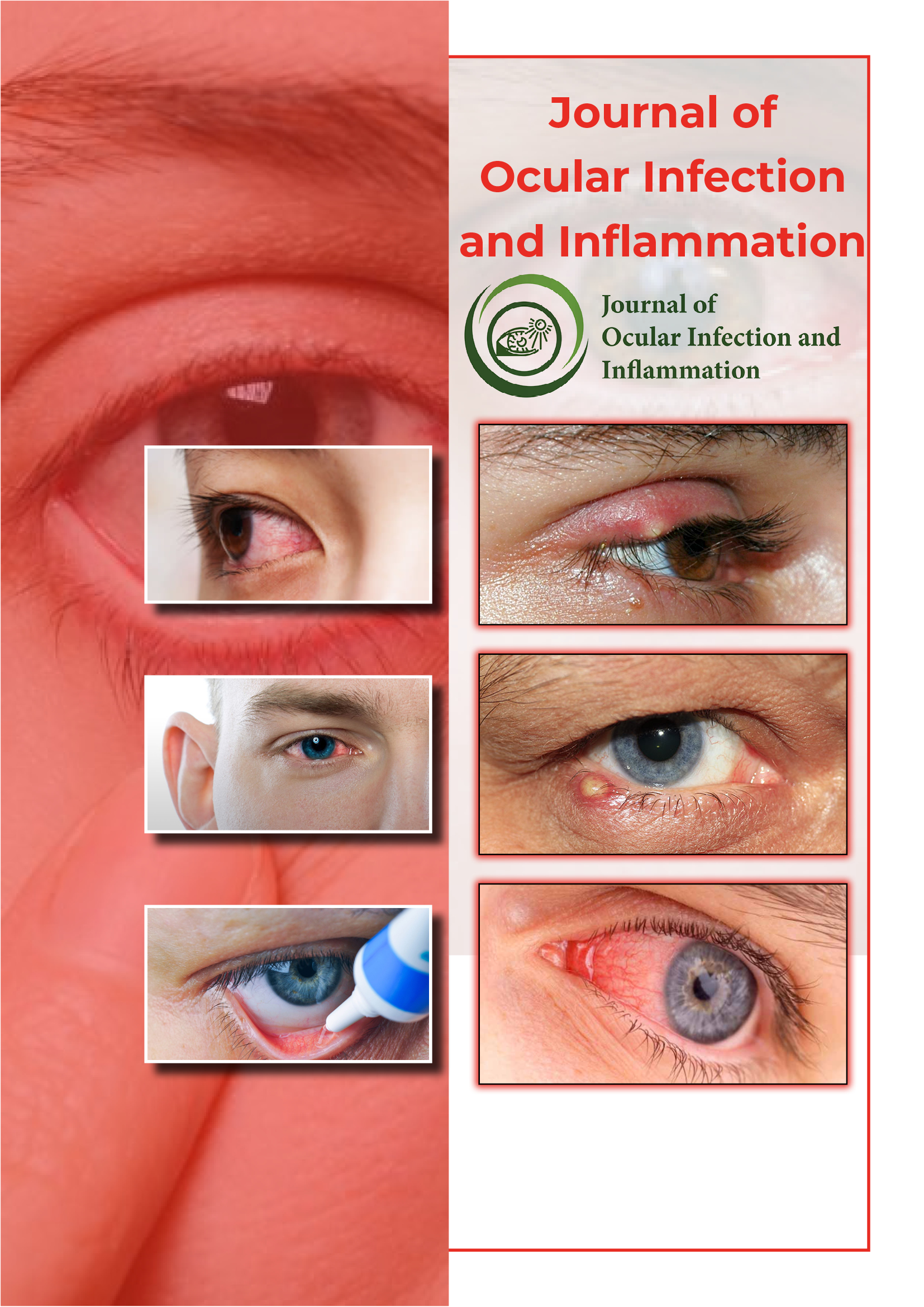Useful Links
Share This Page
Journal Flyer

Open Access Journals
- Agri and Aquaculture
- Biochemistry
- Bioinformatics & Systems Biology
- Business & Management
- Chemistry
- Clinical Sciences
- Engineering
- Food & Nutrition
- General Science
- Genetics & Molecular Biology
- Immunology & Microbiology
- Medical Sciences
- Neuroscience & Psychology
- Nursing & Health Care
- Pharmaceutical Sciences
Perspective - (2024) Volume 5, Issue 1
Advancing Ocular Microbiology Diagnostics: Innovations and Challenges
Naomi Charles*Received: 26-Feb-2024, Manuscript No. JOII-24-25620; Editor assigned: 28-Feb-2024, Pre QC No. JOII-24-25620 (PQ); Reviewed: 13-Mar-2024, QC No. JOII-24-25620; Revised: 20-Mar-2024, Manuscript No. JOII-24-25620 (R); Published: 27-Mar-2024, DOI: 10.35248/JOII.24.05.124
Description
Ocular infections represent a significant challenge to both patients and healthcare providers due to their potential for vision loss complications. Accurate and timely diagnosis is essential for effective management and prevention of long-term results. In this article, we provide practical guidance for clinical microbiology laboratories to improve their diagnostic approach towards ocular infections.
Ocular infections surround a varied spectrum of microbial causes, including bacteria, viruses, fungi, and parasites. The various ranges of pathogens necessitate a various diagnostic approach. Traditional culture methods remain valuable for isolating bacterial and fungal pathogens. However, they may lack sensitivity and require extended incubation periods. Molecular assays, such as Polymerase Chain Reaction (PCR), offer rapid and specific detection of pathogens, particularly viruses. Additionally, antigen detection assays and microscopy techniques provide complementary diagnostic information.
Sample collection is a critical step in the diagnostic process. For bacterial and fungal infections, swabs collected from the conjunctiva or cornea are commonly utilized. Proper sample collection technique, including avoiding contamination and ensuring sufficient material for analysis, is essential for accurate results. In cases of suspected viral infections, techniques such as tear fluid collection or corneal samples may be occupied for PCR-based assays.
Analysis of laboratory findings requires careful consideration of clinical context and microbiological data. Positive culture results should be correlated with patient symptoms and ocular examination findings to guide appropriate antimicrobial therapy. Molecular assays may detect viral nucleic acids even in the absence of viable virus, necessitating clinical correlation to differentiate active infection from viral release.
Advancing technologies, such as Next-Generation Sequencing (NGS) and Matrix-Assisted Laser Desorption/Ionization Timeof- Flight Mass Spectrometry (MALDI-TOF MS), hold potential for transforming ocular microbiology diagnostics. NGS allows comprehensive analysis of microbial populations, supporting the identification of uncommon or challenging pathogens. MALDI-TOF MS provides rapid and accurate identification of bacterial and fungal isolates, streamlining the diagnostic workflow in clinical laboratories.
Collaboration between ophthalmologists and microbiologists is essential for optimizing patient care in ocular infections. Ophthalmologists provide clinical expertise and guidance regarding sample collection techniques, while microbiologists offer specialized knowledge in laboratory diagnostics. This interdisciplinary approach provides accurate diagnosis and customized treatment plans, minimizing the risk of treatment failure or disease progression.
Case studies provide valuable insights into the practical application of diagnostic strategies in practical situations. Consider a patient presenting with acute onset of redness, pain, and discharge in the affected eye. Laboratory analysis reveals the presence of gram-positive cocci on culture, suggestive of bacterial conjunctivitis. Based on antimicrobial susceptibility testing, empirical treatment with topical antibiotics is initiated, resulting in resolution of symptoms and clinical improvement.
Looking ahead, advancements in point-of-care testing and customized medicine hold potential for further improving ocular microbiology diagnostics. Rapid diagnostic tests enable timely initiation of targeted therapy, reducing the risk of vision loss and ocular complications. Customized medicine approaches, such as host genotyping for susceptibility to infectious diseases, may guide individualized treatment strategies and improve clinical outcomes.
In conclusion, clinical microbiology laboratories play a vital role in the diagnosis of ocular infections. By including a comprehensive diagnostic approach, including traditional culture methods, molecular assays, and advancing technologies, microbiologists can provide valuable understanding into the management of ocular infections. Collaboration between healthcare professionals and continuous innovation in diagnostic strategies are essential for providing optimal patient care and preserving vision.
Citation: Charles N (2024) Advancing Ocular Microbiology Diagnostics: Innovations and Challenges. J Ocul Infec Inflamm. 05:124.
Copyright: © 2024 Charles N. This is an open-access article distributed under the terms of the Creative Commons Attribution License, which permits unrestricted use, distribution, and reproduction in any medium, provided the original author and source are credited.

